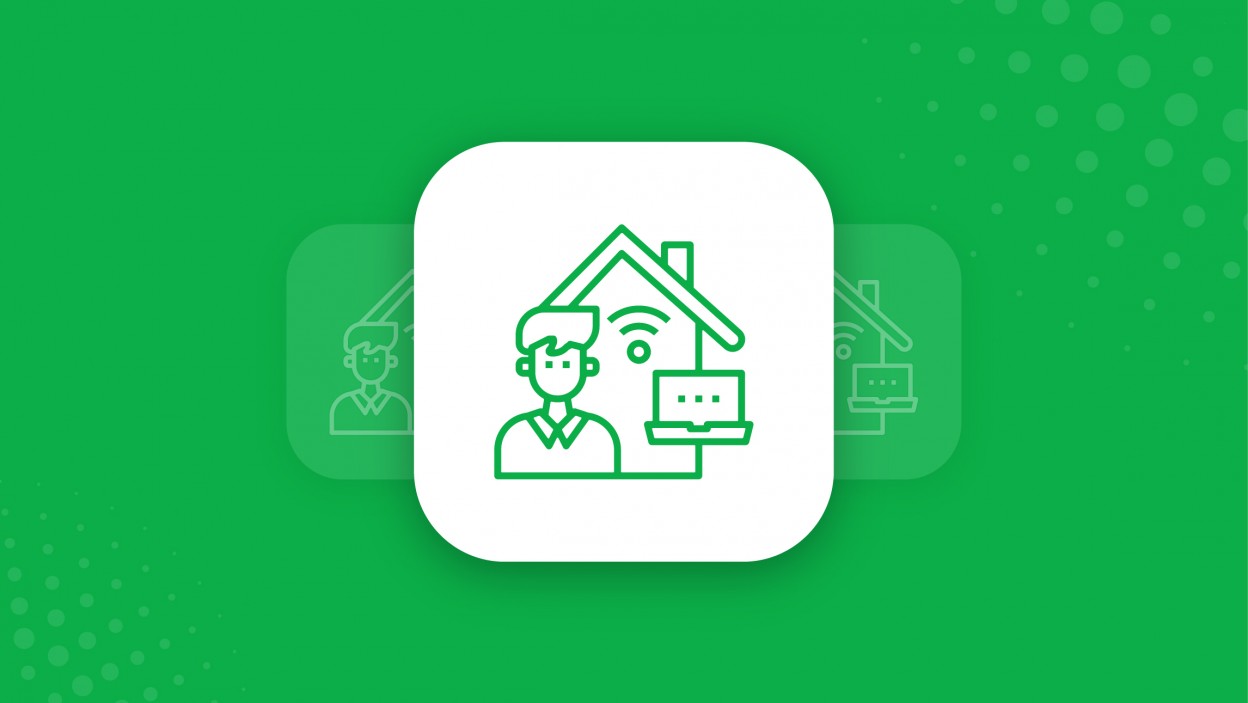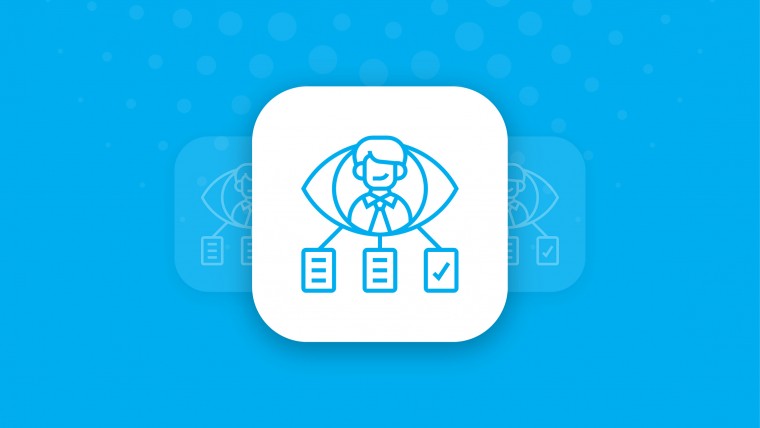When talking about remote work, usually consider it from the employee. We will break this pattern and try to look at this phenomenon from the perspective of the employer to understand the mechanism and understand how to integrate the accounting of working hours of remote employees into the overall monitoring system.
What is remote work?
This question may seem naive – after all, it is quite apparent that remote work is understood as a way of finding a job in which the employee does not have a responsibility as such, but instead works from home. However, this is only the most general plan of the phenomenon that is commonly called remote work today. After all, there are many different types of remote work, each of which may be interesting in its way to a competent leader.
The simplest and most common form is remote contract work (we will call it remote work). In general, it differs from “ordinary” work in the office solely in that the employee fulfills the duties assigned to him by the labor contract not at his workplace, but home. Quite often, there is the option of “partially remote” work when an employee appears in the office only when there is a real need for it.
Another option is freelance. Today, this term is understood as a way of earning, in which a specialist fulfills one-time or relatively rare orders received from various customers, without signing contracts or agreements with them implying a long-term labor relationship. People working according to this scheme are called freelancers. Freelance is frequent in areas where it is simple to divide a large project into several parts and assign a small part to a specialist who is absent in the organization due to the small staff or lack of the need for a regular solution of such problems. Quite often, for example, freelancers are involved in various IT projects when specific issues arise with particular technologies, systems, etc.
Most of the other options for remote work upon closer examination turn out to be one of the two considered above. Despite the apparent differences between them, they have a lot in common from the employer, and it is about this general that we will talk about now.
The benefits of teleworking for the employer
Obviously, like any other phenomenon, remote work has both several advantages that contribute to its very existence in the labor market and several disadvantages that limit the spread of this method of employment. We will start with the part that is more pleasant for employers – the positive aspects of remote work.
The most tangible of them is, of course, overall savings on ensuring the work of its employee, starting with the equipment of the workplace and ending with payments for electricity, Internet access, renting a larger room, etc. In general, for a month, the amount is impressive enough to think about transferring to a remote mode seriously; all employees whose presence in the office is not an urgent need. If you calculate the additional costs, which are compensated in many organizations (transport, mobile communications, etc.), as well as the necessary attributes of office life, among which are tea, coffee, cookies, stationery, etc., – savings will be even more substantial.
Another plus is the ability to recruit employees not from those who live in the city where the organization works, but from a much wider geographical region – in fact, from around the globe, if you do not take into account the language barrier. This allows not only finding the most competent specialists but also saving on their salaries, because, as you know, the wages of representatives of the same profession with approximately the same experience can differ several times, depending on where they live. In many respects, this is the basis for the business of all companies working in the offshore programming market – by purchasing the work of programmers in countries where it costs relatively little; they make projects for customers from those countries where software developers pay significantly more. That is, again, thanks to the remote work, the company gets the opportunity to save on hiring qualified specialists.
Another undoubted advantage of remote work from the employer can be considered an increase in the productivity of employees remaining in the office after transferring part of the employees to the remote mode. The mechanism of this is quite simple: fewer people make less noise, fewer distractions of the order “let’s go out and get a cigarette,” etc.
Thus, as you can see, remote work has many advantages for the organization, the most important of which is the optimization of costs associated with the organization of the workplace and the payment of wages. However, there is a flip side to the coin, which organizations will also have to face when using the labor of remote workers.
Cons of remote work
Perhaps the most delicate issue related to remote work was, is and will be the question of monitoring the activities of workers. Indeed, you must admit that, unlike an office where the employee is always in sight, and where the manager can look into his monitor, it is quite challenging to control what the employee is doing at home. Although there are individual solutions suitable for organizing this kind of control, their use is also far from always convenient, and indeed possible.
There is also another problem related to the remuneration of a remote employee. Time wages traditionally used in many commercial companies and government organizations are inefficient because they encourage employees to assign themselves extra hours worked, rather than increase work efficiency.
However, as a rule, these two problems are solved “with a bang” by themselves, due to the nature of the duties assigned to the remote employee. As a rule, he is entrusted with the performance of such tasks that are not too critical in terms of time, that is, the remote worker can work at any time convenient for him, day or even night. He also does not need extra control of the management when using a remuneration scheme other than time-based, because in this case, he has an incentive to complete more tasks at the same time to earn more. Real, it is worth noting that the scheme with functions is not always effective enough – it all depends on the nature of the employee’s activities.
A severe problem with the active use of remote work in an organization is the communication between employees, and also, if employees are far from each other, the difference in time zones. In the case of remote workers, a problem may arise even if they live in the time zone due to the individual characteristics of each of them. Many of them prefer to work outside of working hours, and many do not have the opportunity to work in the same mode as office workers, due to any family circumstances. Thus, the manager, having sent the task to the employee by e-mail, cannot be sure that he will read the received letter in a reasonably short time, and will quickly complete the tasks assigned to him.
For the same reason, the speed of communication between a remote employee and his colleague’s decreases, with which he is forced to exchange information due to work needs. Of course, modern means of communication, including fast messaging tools (Skype, Viber, Telegram, WhatsApp), mobile phones allow you to communicate with a remote employee when he is online quickly. Many employers set up a permanent online presence as one of the conditions for remote workers in one of these quick communication systems. However, this cannot be said to be an excellent idea, because, as mentioned above, not all employees manage to sit at the computer for the whole working day, and as a result, the employer either loses a valuable employee or does not receive the necessary communication efficiency due to because the employee simply launches Skype, without physically being present at the computer and reading the messages received.
Therefore, remote employees are trying to get work that does not require a large amount of communication with other employees and allows them to build their work schedule.
Remote work and information security
Separately, it is worth pointing out the existence of such a problem as ensuring the information security of the organization when using the labor of remote employees. The threat of information leaks through remote workers is quite high because the specialists responsible for the information security of the organization are not able to use the entire arsenal of the technical tools and policies that help ensure safety at workstations in the office. Nevertheless, since security is a prerequisite for the organization, you have to look for ways to solve the problem of information security during remote work.
The very first and most crucial step in solving this problem is the careful selection of tasks delegated to the remote worker. Ideally, the information security department or another unit responsible for this direction in the organization should examine each of the assignments sent to the remote employee. Of course, this is not always convenient, and therefore, usually large organizations with a relatively large staff of remote workers are satisfied with the development of security policies regarding tasks assigned to such employees, which should guideline managers working with remote employees.
It is also necessary to instruct remote workers in the field of information security and the mandatory inclusion of an agreement on non-disclosure of data received from the employer for all remote workers, both contractors, and freelancers. Moreover, in the case of the latter, special attention should be paid to security issues, since the freelancer is in no way interested in preserving the corporate secrets of the customer since the benefit of selling corporate information often exceeds the cost of the work that the organization ordered him to.
In some cases, when one of the responsible employees has to switch to the partially remote mode, it is necessary to use individual technical solutions that will allow security specialists to control how an employee who works at home handles corporate documents. Many modern data leakage protection systems have support for the so-called endpoint solutions, which allow collecting information at workplaces and then transmitting it for analysis to corporate servers. Most of these solutions are aimed at applications in which an employee with his laptop, for which he does most of the work, still periodically connects to the corporate network when he comes to meetings or to solve any working issues in the office. The only difficulty is the inconspicuous implementation of the component of the DLP-system that collects information on the laptop of a remote employee.
If an employee is working all the time remotely and does not appear in the office so that the endpoint solution can “”transfer the accumulated information to the corporate server, it is possible to use tools that allow you to transmit information about user actions in real-time remotely. In this capacity, for example, remote administration systems can be used, which are much cheaper than information security solutions. Real, it is worth noting that analyzing the actions of a user of a remote computer will require a lot of time from the information security department, so this kind of control over each of the remote workers can hardly be considered appropriate.
Generaly, it is much more convenient not to give the person who works remotely valuable sensitive documents than to monitor what he does with them manually, and it is better to use endpoint solutions in cases where an employee with his laptop still periodically looks into the corporate office.
Task management solutions
When setting tasks for remote workers, it is advisable to use a unified task management system throughout the organization that will transparently monitor not only the “work fronts” assigned to this employee but also the readiness of individual tasks. Such a system should be accessible via the web, and be able to have a simple and intuitive user interface so that neither the remote employees themselves nor their managers get confused.
There are many similar systems on the market today. Some of them are available as SAAS solutions; some can be specially installed on a corporate web server. Each approach has its pros and cons. Therefore, for example, if the company has already formed a corporate portal for employees with various services, but the task management system is not in the list of these services, then it is more reasonable to use an utterly third-party solution based on the SAAS model, which does not require integration with other services. If there were no portal as such, then it would be better to place the system on your server to avoid all the problems associated with the application of SAAS solutions. You can, of course, develop such a policy on your own; however, if there are no programmers in the organization’s staff, it is hardly advisable to hire them only to develop this system.
Those employees, who work in the office, since, in general, the principle of setting tasks, can effectively use the task management system and monitoring their implementation should be identical for both categories of employees.
There are not so many requirements for task management systems. In addition to the web-interface and transparency of the dialogue with the user, it is worth noting the necessary features: support for a calendar with the display of tasks on it, the ability to automatically assign bonuses and penalties for accelerated or, on the contrary, slowed-down execution of functions, the ability to attach graphics files to tasks (for example, diagrams explaining the essence of the work), sending notifications of the assigned task by e-mail or via SMS.
Is it difficult to find remote workers?
As a rule, those wishing to work remotely are significantly more than the number of vacancies for this kind of employment offered by companies. Therefore, finding an employee for remote work is usually much more comfortable than someone who needs to work in the office. Another thing is that, as a rule, when publishing a vacancy with the possibility of remote work, the HR department risks literally being attacked by those who saw this announcement and even after the vacancy is closed, and ads from websites and newspapers are removed, calls from those who want to find a job will continue to the company. Therefore, it is more expedient to search for candidates among the database of resumes, especially since there are usually quite a lot of such resumes.
As for freelancers, you can use particular freelance exchanges to find them, where you can see workers of almost any specialty from different cities and even countries.
Freelancer exchanges allow you to select the most qualified freelancers easily, both with the help of ratings compiled based on assessments of the quality of work left by customers and with the help of particular examples of tasks already performed by freelancers. Of course, if the rating is based on a small number of functions, then it is hardly worth giving it too much significance, but if more than a dozen customers are convinced that this freelancer is a professional in their field, then this opinion can be trusted. The rating on exchanges (at least on old and well-known ones, such as those listed above) is reasonably well protected from “frauds,” but it is better to look through the gallery of works, which should confirm the high status of a freelancer.
When hiring freelancers, it is easier to find someone who will take the cheapest for such a job. However, at the same time, it should be understood that, as the saying goes, there is no such thing as a free lunch. Therefore, students who do the proposed work at low prices are not able to offer the level of performance those professionals who have been earning money with freelance for more than a year. It should be remembered that you already save on hiring workers by contacting freelancers, and therefore the extra savings expressed in recruiting those who offer not the best price-quality ratio, but merely the lowest price becomes unreasonable.
Summary
Summing up everything that has been said above, we can say that remote work, which has firmly become part of our daily reality, with a competent approach guarantees the employer only advantages, although, of course, issues such as ensuring information security should be thought out in detail in advance, to eliminate potential troubles on the part of remote employees or freelancers.








5 Reasons Why Strategic Decision Making Is Most Important In Business Growth
4 Characteristics of high performing transformation teams
Top 10 Tips for Healthy Work-Life Balance
How to Design an Effective Diagnostic Questionnaire?
Should You Become An Independent Consultant?
8 Characteristics of great consultants. Do you have what it takes?
4 Characteristics of high performing transformation teams
Types of Cloud Computing